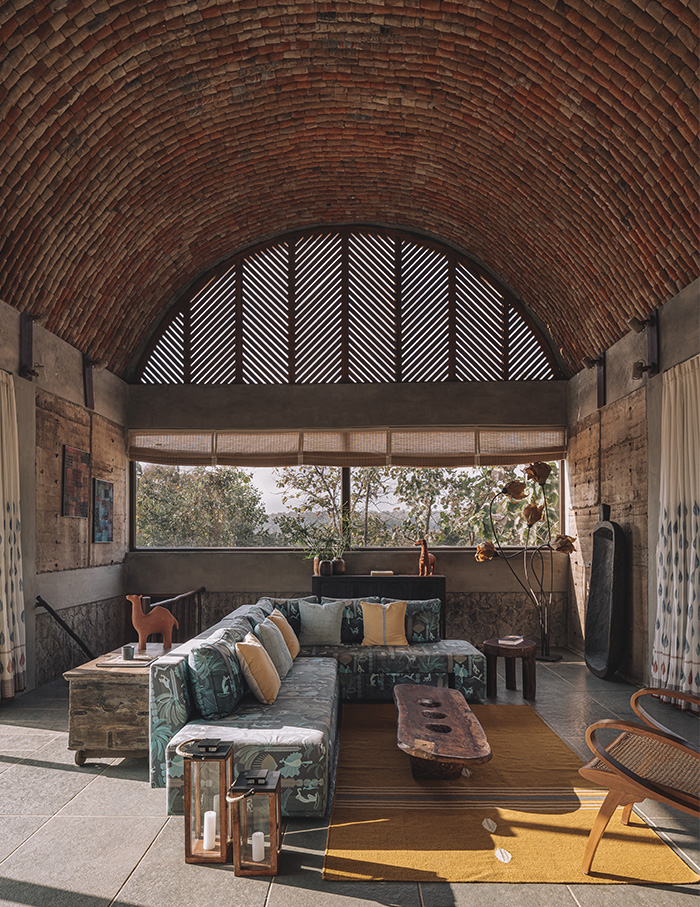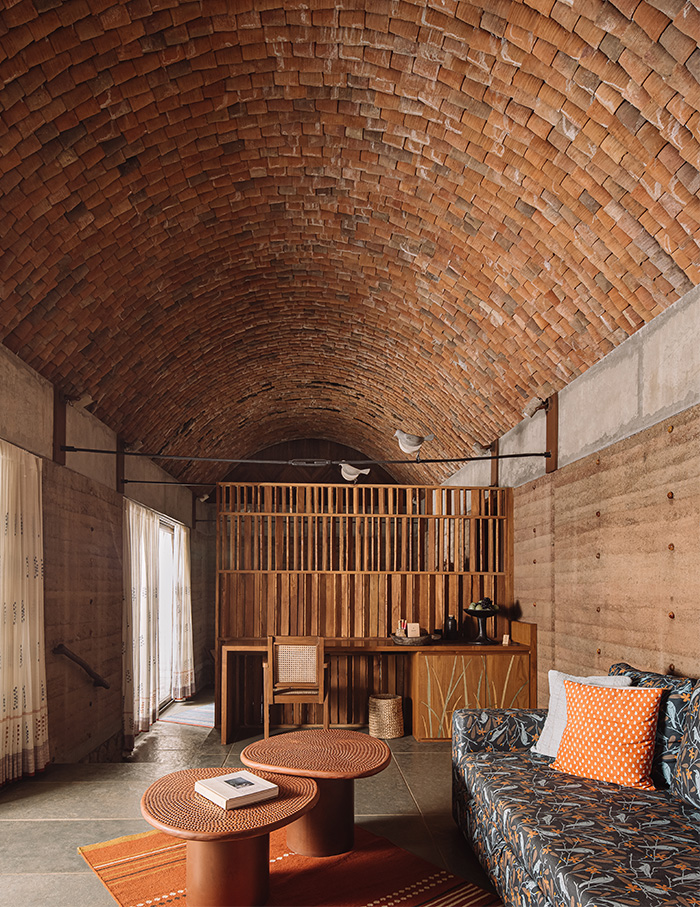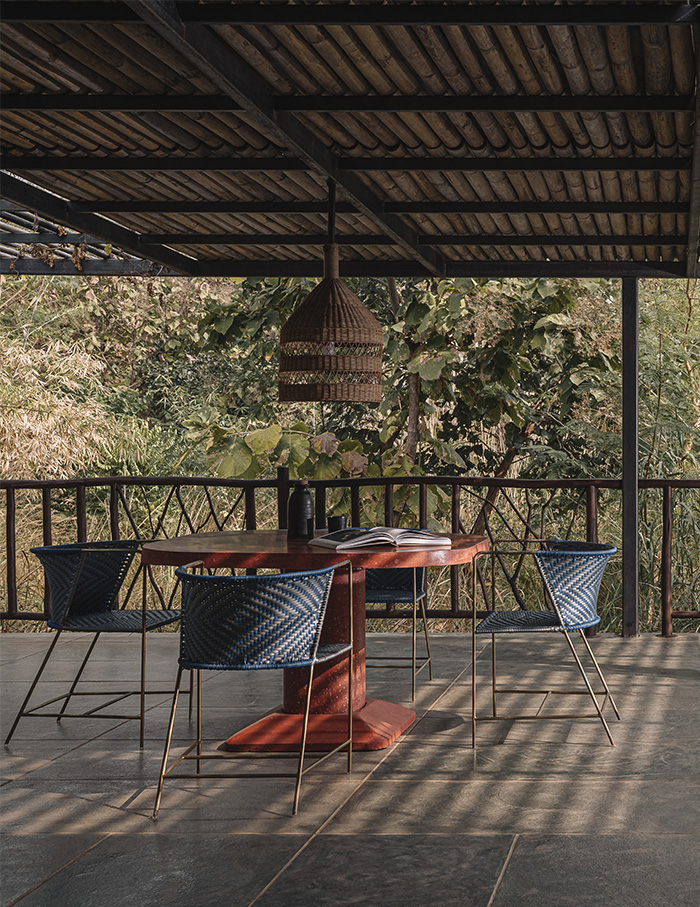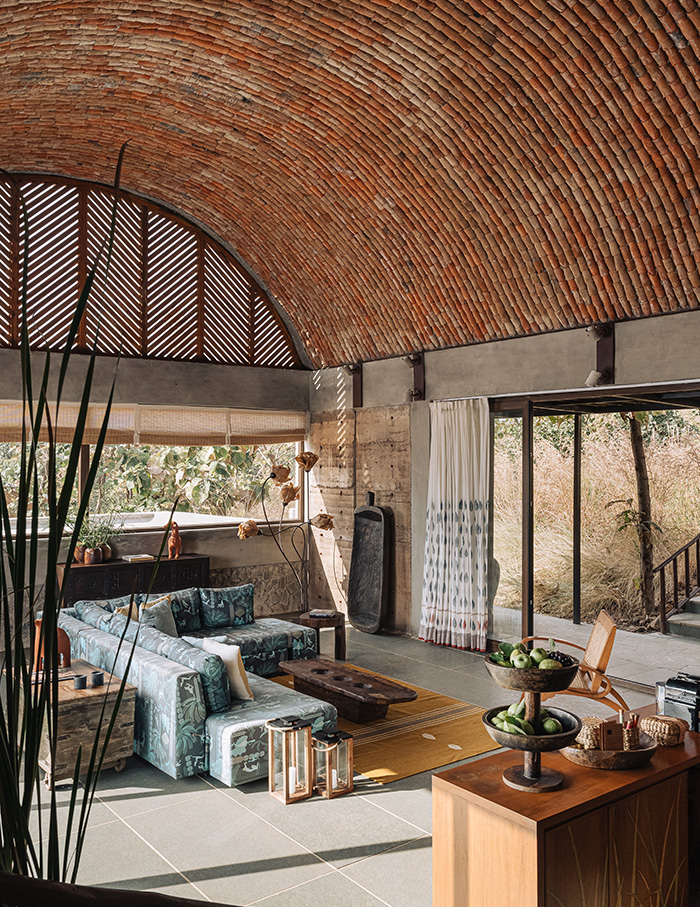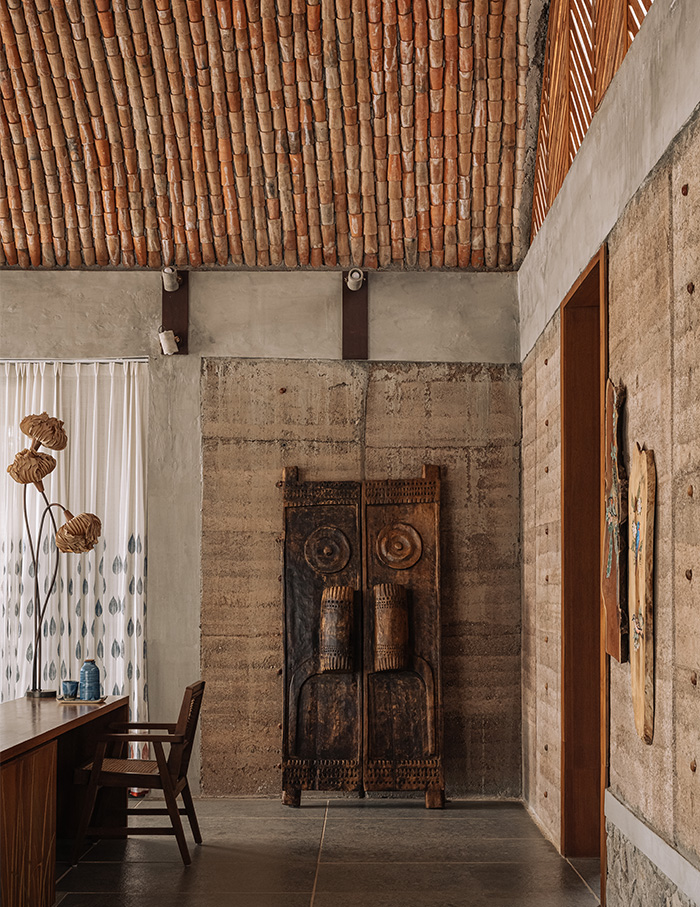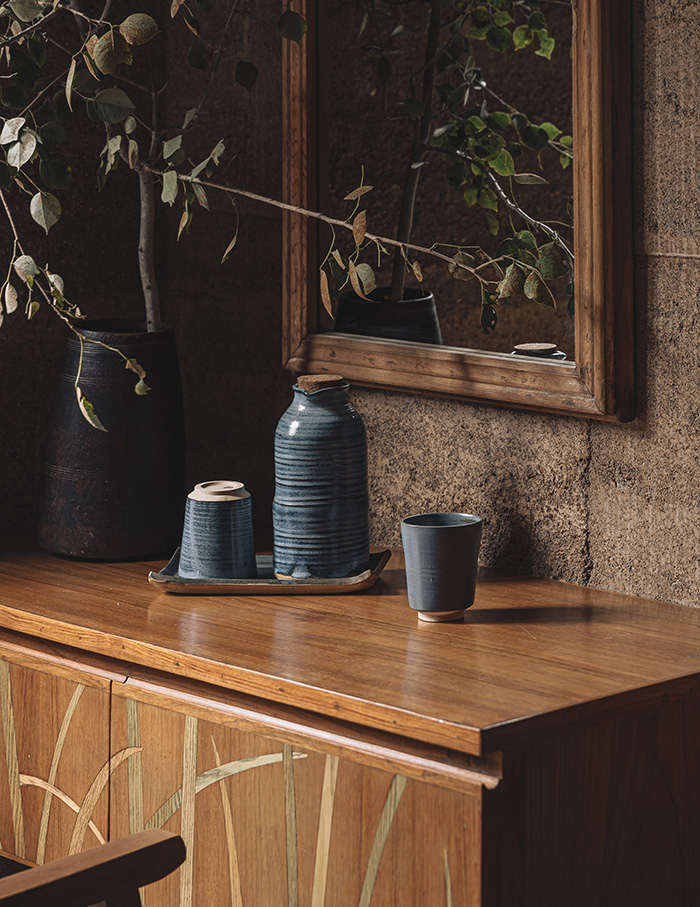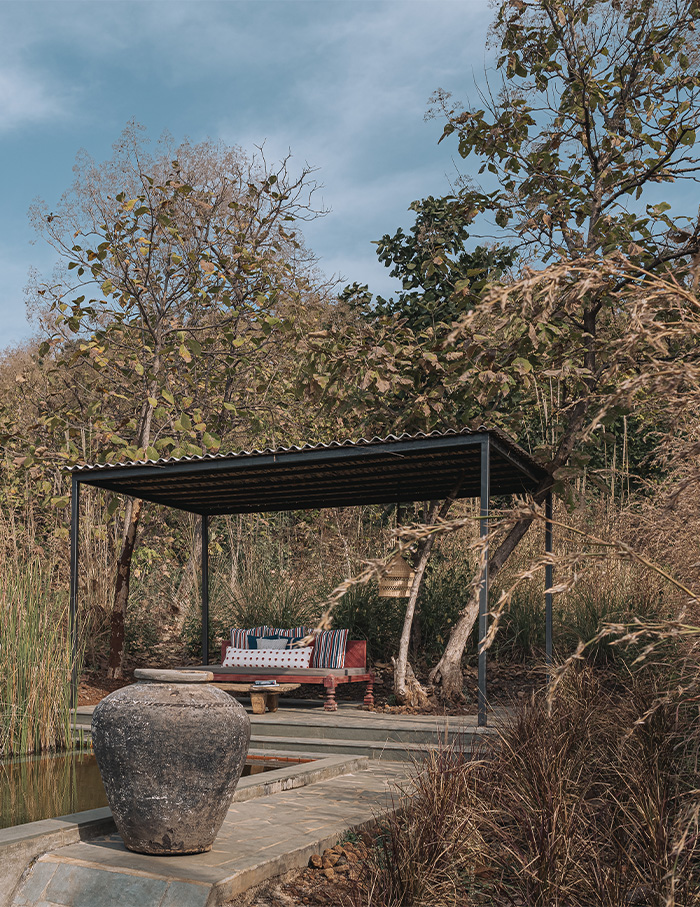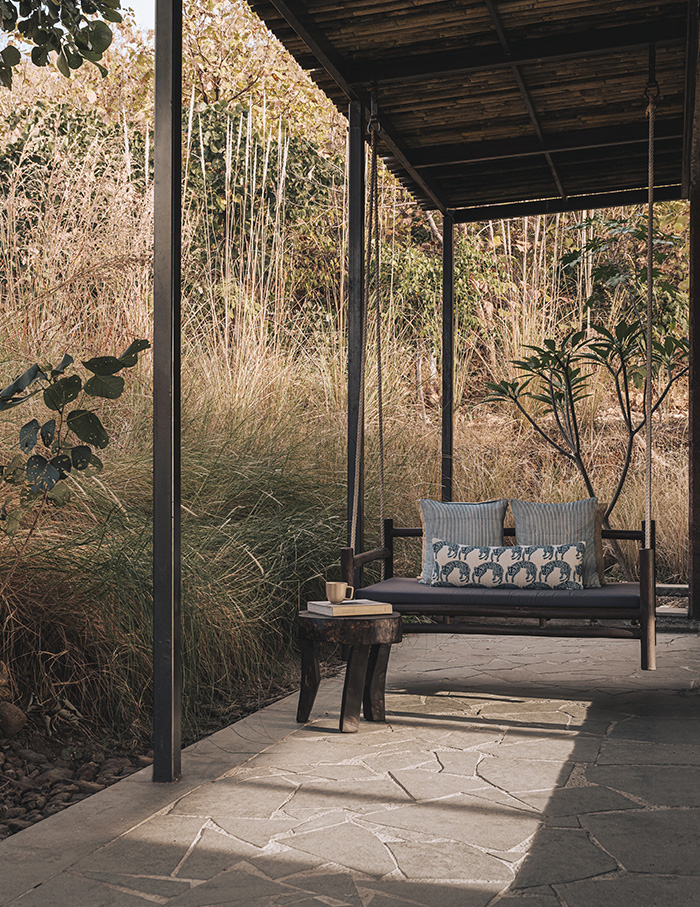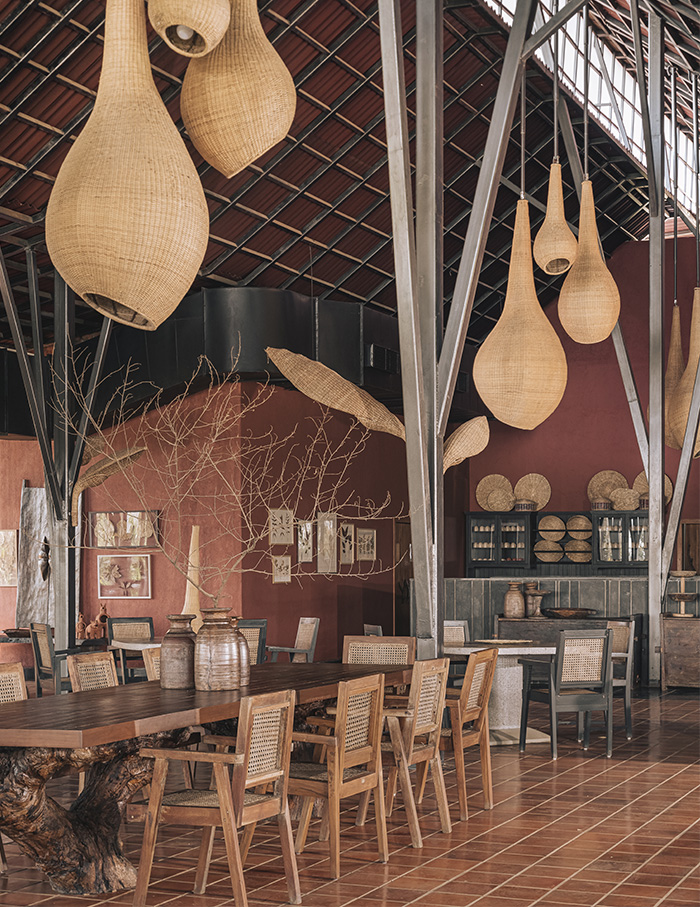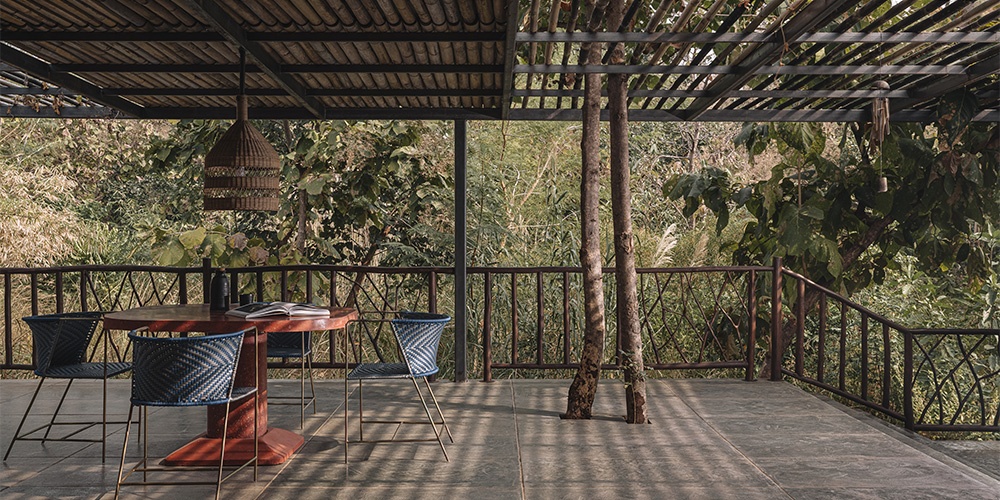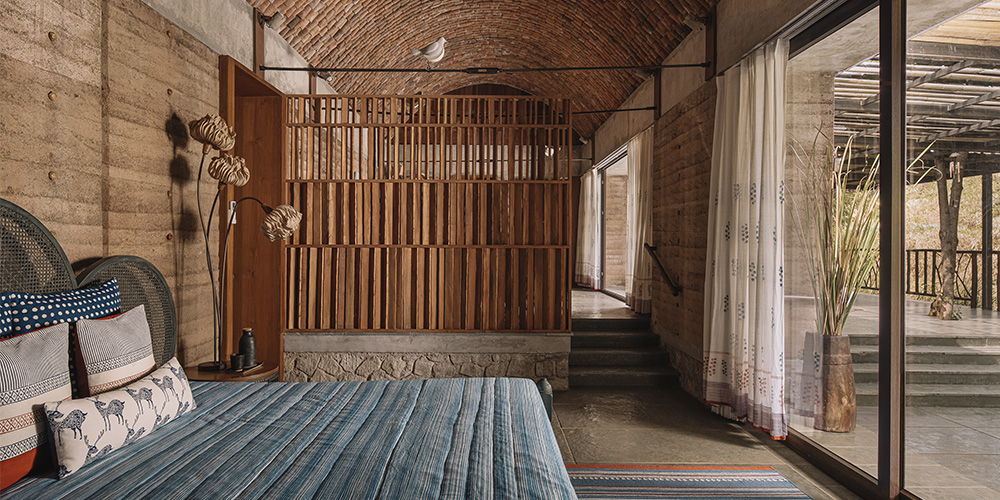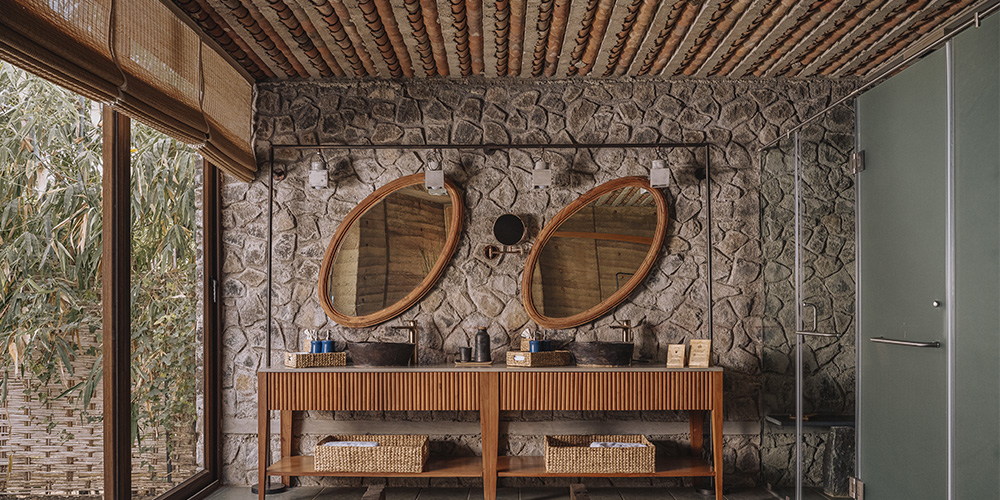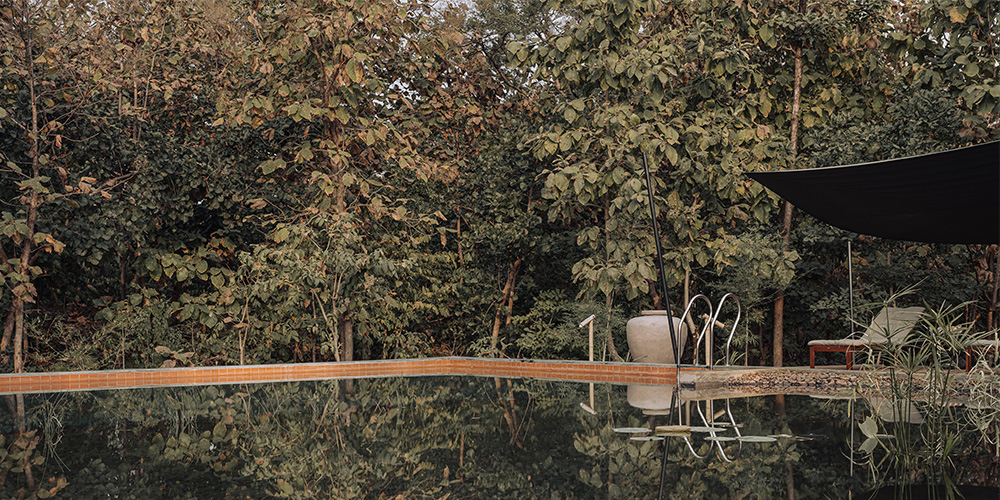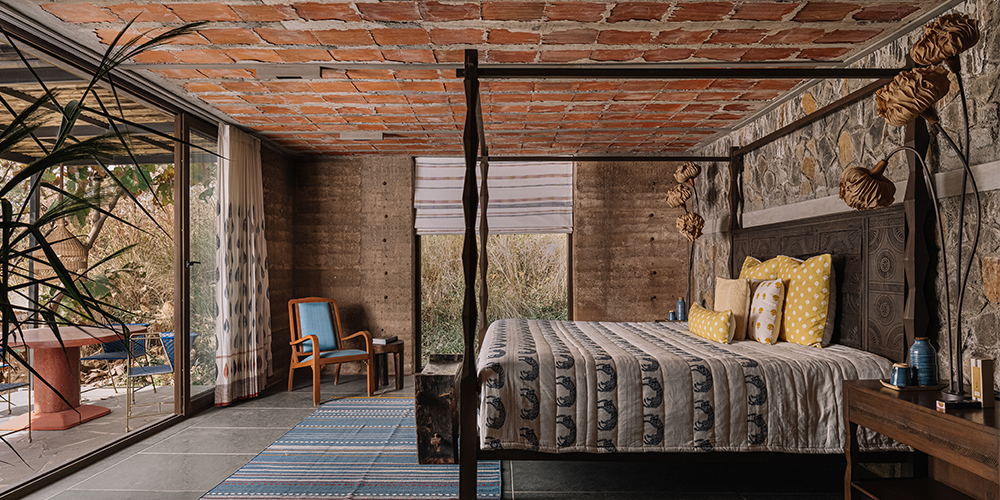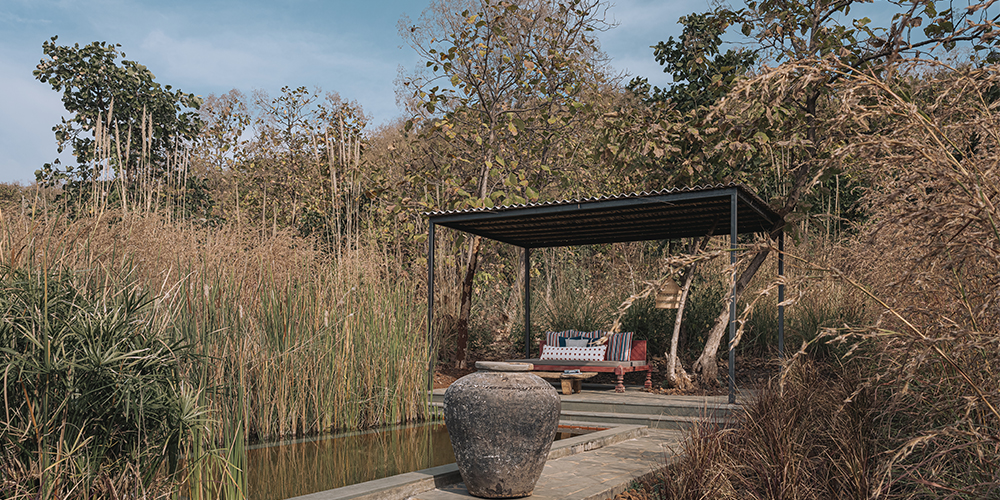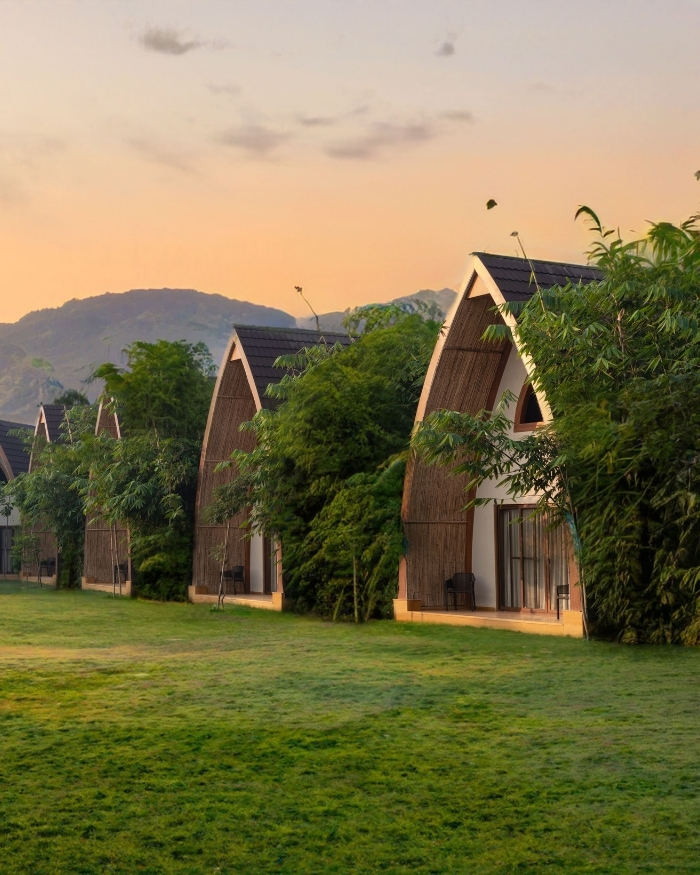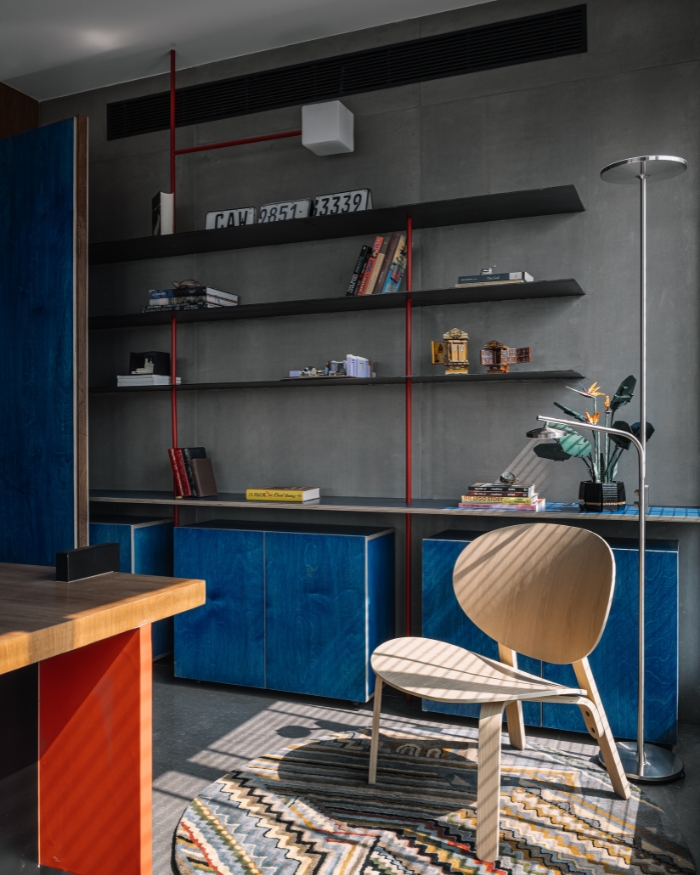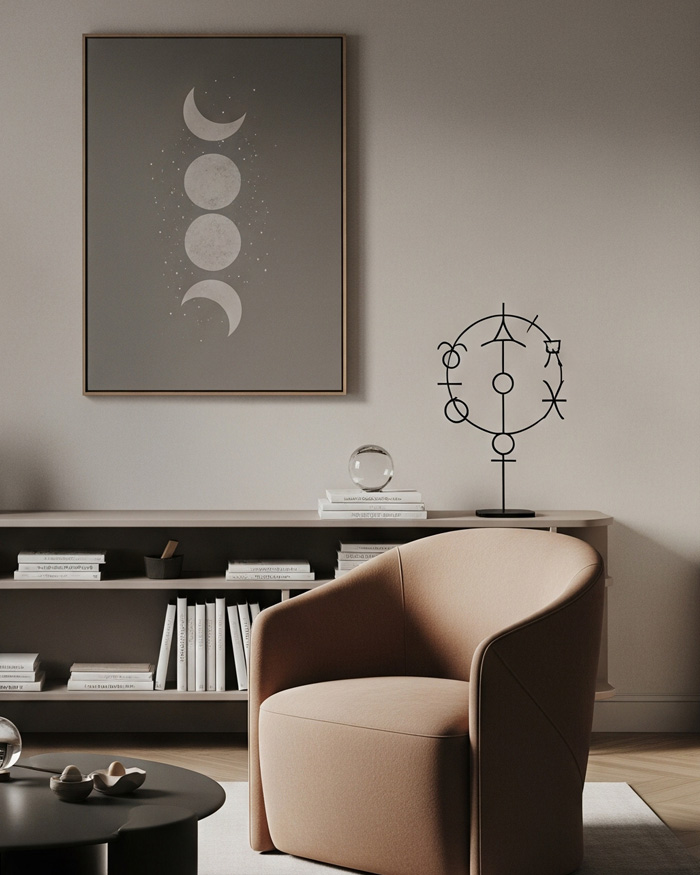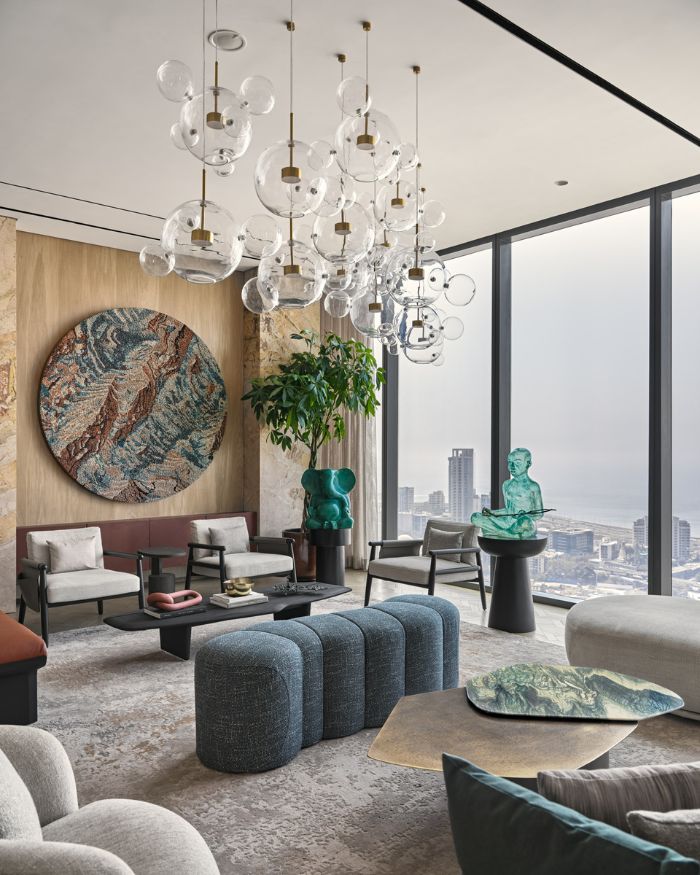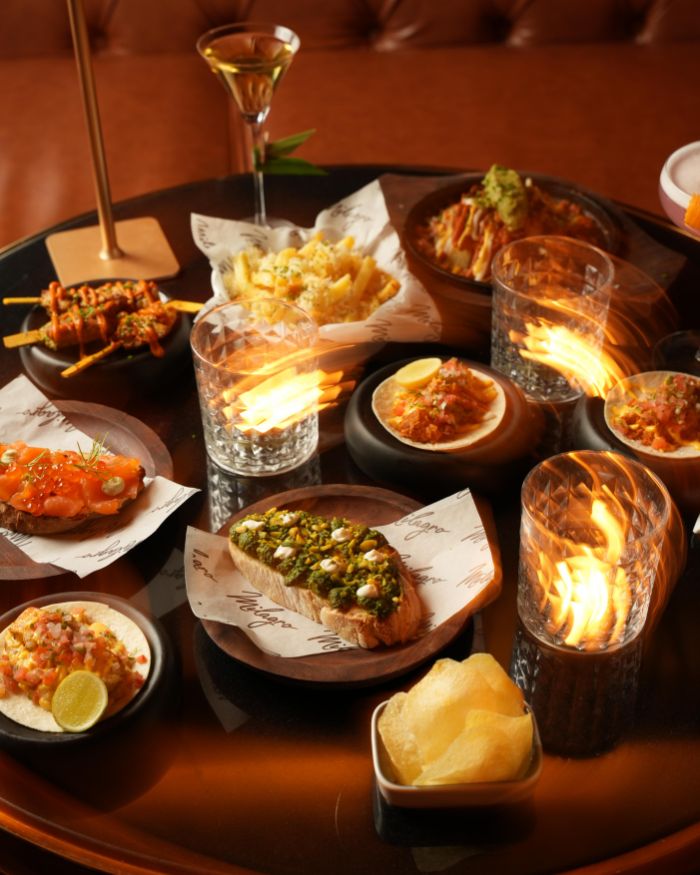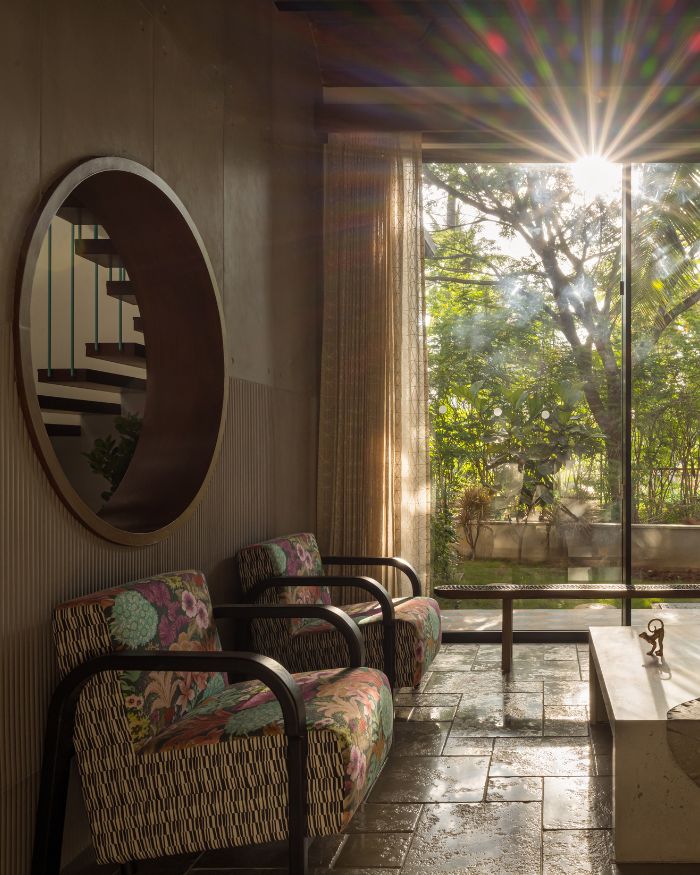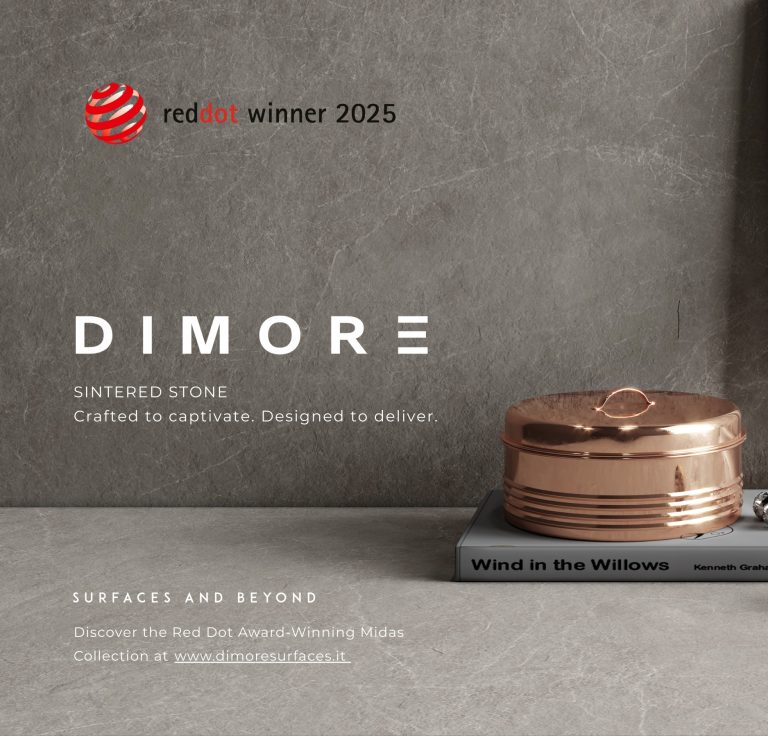Tipeshwar’s immediate precinct — dusty roads, city lights and traffic defy the microcosm of holistic goodness that awaits us. Our journey from Nagpur airport towards Yavatmal to reach Tipai – Wildlife Luxuries has been long but worth the wait. And a great example of the maxim—all good things take time! Spread across 35 acres, Tipai is the result of founder Keyur Joshi’s vision and EDIDA winner Ariane Thakore Ginwala’s conviction in sustainable design.
She tells us, “We spent six to eight months with the Centre of Science for Villages (CSV) in Wardha which is 80 kilometres from Tipai, researching low-impact construction before we zeroed on rammed earth construction. Prior to that that, five years were invested in permaculture practices with Goa-based permaculturist Parag Mody.”


